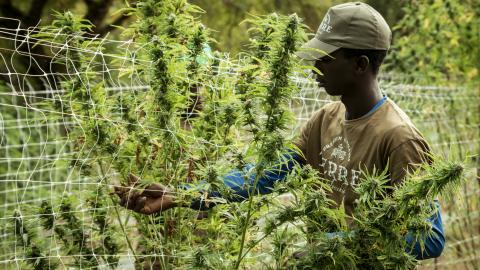
September 1, 2022
The hazards faced by workers in the United States are changing. While traditional occupational hazards such as chemical exposures and physical safety hazards continue to be responsible for a large number of workplace injuries and illness, changes in the organization of work and the workplace itself present new challenges to providing a safe and healthy work environment.
Two examples of changes that impact the health of workers are the increase in precarious work arrangements, and changes in our climate that result in more frequent extreme climate events[1]. In order to ensure that our trainees are prepared to meet these emerging challenges, the Northwest Center for Occupational Health and Safety (NWCOHS) has developed training materials on these topics, and integrated them into our graduate coursework and our continuing education program.
Climate-related hazards
NWCOHS has developed three case studies that highlight specific examples of climate-related hazards that affect the health of workers:
- Impact of wildfire smoke on outdoor workers
- Occupational heat-related illness
- Climate change, infectious disease and worker health
In each of these case studies NWCOHS trainees examine the evidence linking these hazardous exposures to occupational health impacts. They then apply their occupational health and safety (OH&S) training to identify workers likely to be at risk, consider how to quantify these exposures, explore options to control these exposures, and consider approaches to manage these risks through OH&S programs and policies. Recent rulemaking in both Oregon and Washington around occupational exposure to outdoor heat and to wildfire smoke has highlighted the relevance of these topics for OH&S trainees[2].
Precarious work
The recent move away from traditional standard employment models to non-standard work arrangements, like gig work, has resulted in the increased prevalence of precarious work. Precarious work is work that is uncertain, unstable, and insecure and in which employees bear the risks of work (as opposed to businesses or the government), and receive limited social benefits and statutory protections[3]. Some characteristics of precarious work include: low wages, no employer-paid health care, sick time, or vacation; no retirement benefits; no contract protections; and limited control over work tasks or schedule. Precarious jobs frequently lack adequate health and safety protections, and may be associated with higher levels of psychosocial stress[4].
NWCOHS trainees examine the core concepts that define precarious work, the societal forces that are driving the increase in precarious work and the relationship between job precarity and worker health and well-being. NWCOHS explores these concepts further in a case study focused on immigrant day laborers.
Focus on interdisciplinary approaches
Through these case studies, NWCOHS trainees explore how the skills and competencies from their specific OH&S discipline can address the worker health and safety risks associated with extreme climate events and precarious work. In interdisciplinary small groups trainees share their discipline’s perspective and brainstorm complimentary approaches to managing the risks presented in each case study.
Further learning opportunities
- Occupational & Environmental Medicine Grand Rounds Lecture Series: Mental Health in the Workplace, October 17, 2022, 6:00-7:30PM Pacific
- Pacific Northwest Agricultural Safety and Health Center (PNASH): Heat Illness Prevention information and resources
- Pacific Northwest Agricultural Safety and Health Center (PNASH): Wildfire Smoke Safety information and resources
- Pacific Northwest Agricultural Safety and Health Center (PNASH): eLearning Courses
- Heat-Related Illness Prevention
- Pesticide Safety Solutions
- Sexual Harassment Prevention
- Dairy Safety Toolkit
References
[1] https://www.cdc.gov/niosh/topics/climate/how.html and https://www.ncbi.nlm.nih.gov/pmc/articles/PMC5017900/
[2] https://lni.wa.gov/safety-health/safety-rules/rulemaking-stakeholder-information/wildfire-smoke and
https://osha.oregon.gov/rules/advisory/smoke/pages/default.aspx
[3] Arne Kalleberg and Steven Vallas, Precarious Work. Research in the Sociology of Work, Volume 31, 1–30.
[4] https://www.annualreviews.org/doi/10.1146/annurev-publhealth-032013-182500
Cover photo credit: Adobe Images gianni, file #521839566.




